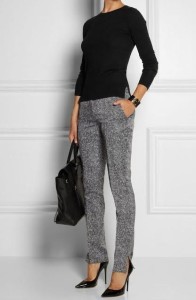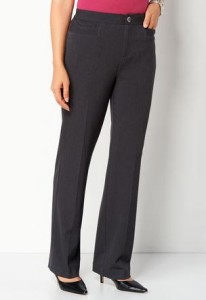Blazers & jackets can be the biggest challenge in terms of correct fitting. I’ve had two clients in the last week that will need their tailor to adust the jackets I’ve found for them. Not all clothes come perfect from the manufacturer – in fact, I often get my clients to try on two or three of the same size in the same garment just to find the best fitting one. This can be an interesting exercise – one of my clients recently took a jumper home in an ‘extra large’ because it fitted perfectly compared to the ‘size small’ that was way too big.
Pants can be another area of concern for many people, and may require some good adjusting.
This week we’ll look at the fitting aspects of trousers…
-
Look for creases or ‘smiles’ across the crotch or hip area of your trousers – this indicates they maybe too tight or too long in the rise. If there’s puckering or wrinkling in the front panel, the pants are too tight. And if there’s billowing and fabric that doesn’t lie flat, (often when you sit down) the pants are too big.
-
Make sure your trousers are not too tight or too loose as this will look ‘ill fitting’ and cheap.
-
It’s best if no under pant line is seen – a boy leg or g-string under pant will be better hidden under your trousers.
-
Trousers that ride up the derriere look terrible on anyone, this would indicate you need to perhaps go up a size.
-
A ‘camel toe’ is equally as bad as tip number 4 – please check!
-
If your backside is being revealed when you sit down the rise is too low for you.
-
Belly button height for trousers to sit is a good rule of thumb for rise length.
-
Always sit down to test the waist of new trousers – it should fit comfortably. Go bigger if you must and have them taken in.
-
Any pleats should lie flat.
-
Have pockets sewn closed or removed for a neat slimmer look.
-
Flat wide waistbands with minimal details are fabulous for tummy issues
-
“Generally, the rule of thumb is that you should be able to put two fingers inside the waistband to have a little wiggle room.
-
Make sure the thigh width is right for you. A good rule of thumb is you should be able pinch an inch of fabric.
-
Hems should just graze the floor – not drag on it.
-
Have hems adjusted according to the shoes you’ll be wearing with the trousers.
-
Just one leg break at the hem is required.
-
Trousers should fall from the bottom cheeks straight down rather than curve under.
As seen in the www.weekenderherald.com.au/







